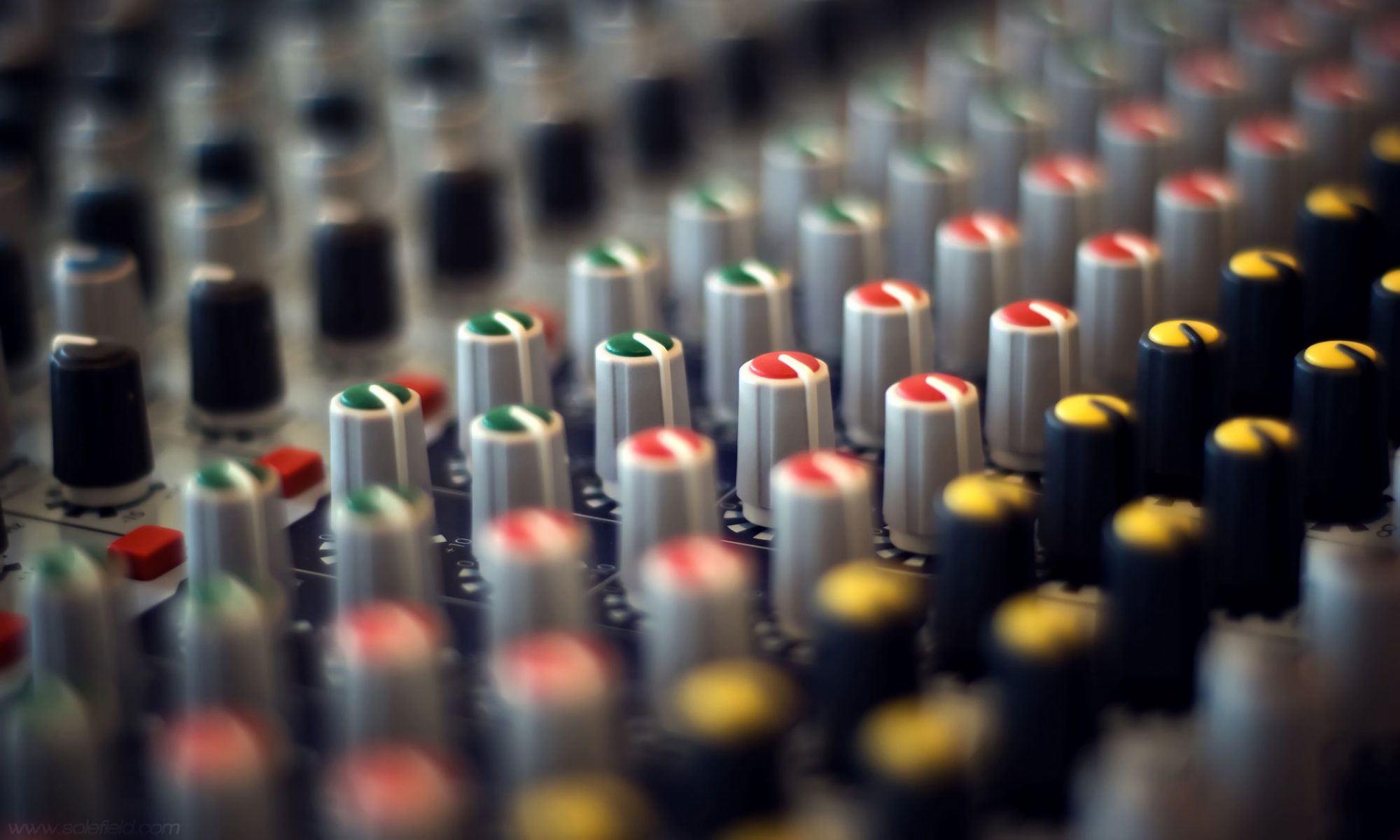Well it’s the last week of our Waves Multirack series. This week we will be looking at the processing I use with my group busses. On my console, nothing is directly routed to the master. This is done for many reasons but organization and the possibility of group processing is the main reason. For the band inputs everything comes in normally, than is routed to my group busses (i.e. drums, instruments, tracks, vox, and fx), and from there routed to the broadcast master and master bus/aux sub. I don’t do any outboard processing to the FX returns but I do attenuate them in the broadcast mix which is why they are split from their respective groups. However, I do a small amount of group processing on the other four groups which is what I’ll be covering today. Once again, this is what is needed for my situation and is at best a suggestion of a starting place for any other room/PA. Group processing should be very well thought out and carefully considered as decisions made in this arena can have major impacts on your mix as a whole.
My drum bus is pretty empty within waves. I usually just have an NLS Bus plugin on it to complete the NLS chain appropriately within waves. Putting the NLS on the bus simulates the audio actually going through the physical bus of the chosen console and you get some nice summation of all the harmonics you’ve introduced. This does require that you assign each input channel to a VCA and that the bus itself is also assigned to the appropriate vca. Additionally, if I ever feel the need for some group compression to help glue the drum set together I’ll either pull up my SSL Bus compressor built into my console or I’ll pull up the API 2500 or VComp within waves to pursue that further. More often than not the SSL compressor has the desired results and I can stop there. From time to time I’ll drop in a C6 for F6 and start with some of the mastering presets as a guide and tweak until I find something I like as well.
My instrument and tracks busses are treated the same way. Just an NLS plugin on there to complete the NLS chain and perhaps a compressor as well. I find bus compression on these two groups to often work against my goals for mixing. It works well on drums because I want the group of drums to sound like each other in terms of intensity and attack but with guitars and tracks, I want things to stand out when I mix them that way. I don’t want to be driving my guitar solo into a compressor. Instead I want the guitar to open up and take over. The same goes with my tracks group. If I’m pushing a driving synth into a compressor I’m basically turning everything else down instead of letting the synth grow in power. Instead with these inputs I’m more apt to adjust individual compression settings rather than the bus. But I do have a trick that I use with these two groups: dynamic, frequency based, externally triggered compression. I side chain the vocal group into an F6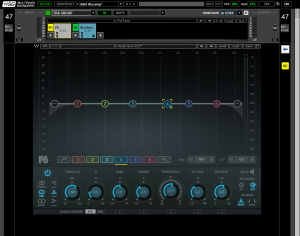 that compresses the vocal range out of the instruments and tracks when someone is singing. This helps to create space for the vocals to dominate that space as much as I want. I do this dynamically so that during those solos or big breakdowns, I’m not doing anything to the group but when someone is singing I’m gently clearing the vocal range of other traffic. We aren’t talking big cuts here, between 3 and 5 db will do the trick. I’ve found that when I do this, this allows me to really nestle the vocals down with the band instead of having to push them so far on top. Because the vocals are the loudest by far in just about any mix, this allows me to not need to push them quite as hard to get the clarity that I need for my mix. If you’ve never tried it, just give it a whirl. You can do this with any compressor that can be externally triggered and frequency selected. Remember, we basically want to just attenuate the vocal range out of the instruments and tracks inputs. Here is a link to a chart I reference when I’m setting things up that gives interactive information on the right when you move your mouse around the chart. I would recommend setting your multi-band compressor of choice up, turning it on, and then moving the frequency around a bit and seeing where it’s most effective for you. The content of your mix can really drive where you need to compress to make room for the vocals so take the time to set this correctly and check on it from time to time.
that compresses the vocal range out of the instruments and tracks when someone is singing. This helps to create space for the vocals to dominate that space as much as I want. I do this dynamically so that during those solos or big breakdowns, I’m not doing anything to the group but when someone is singing I’m gently clearing the vocal range of other traffic. We aren’t talking big cuts here, between 3 and 5 db will do the trick. I’ve found that when I do this, this allows me to really nestle the vocals down with the band instead of having to push them so far on top. Because the vocals are the loudest by far in just about any mix, this allows me to not need to push them quite as hard to get the clarity that I need for my mix. If you’ve never tried it, just give it a whirl. You can do this with any compressor that can be externally triggered and frequency selected. Remember, we basically want to just attenuate the vocal range out of the instruments and tracks inputs. Here is a link to a chart I reference when I’m setting things up that gives interactive information on the right when you move your mouse around the chart. I would recommend setting your multi-band compressor of choice up, turning it on, and then moving the frequency around a bit and seeing where it’s most effective for you. The content of your mix can really drive where you need to compress to make room for the vocals so take the time to set this correctly and check on it from time to time.
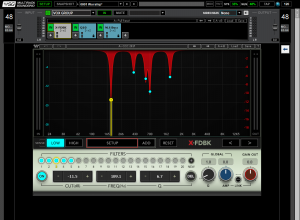 Lastly, in regards to the vocal bus, there isn’t much else different here except that I have inserted a Q10 to replicate the findings of an X-FDBK run. If you haven’t heard of X-FDBK I’d check it out. You just drop in on the channel or bus that you want to remove feedback from, turn it on, and let it do it’s thing.
Lastly, in regards to the vocal bus, there isn’t much else different here except that I have inserted a Q10 to replicate the findings of an X-FDBK run. If you haven’t heard of X-FDBK I’d check it out. You just drop in on the channel or bus that you want to remove feedback from, turn it on, and let it do it’s thing. 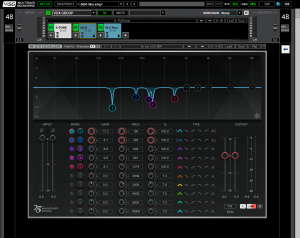 Now, I usually do this a few times so I can know how far I can push the processor before it goes hog wild and just turn it all down. In my setup I took my lead vocals mic, dropped it in the middle of my room, pointed it back at the PA, and did a feedback run. After getting reliable and consistent results I turned off the plugin and replicated the cuts with a dsp light EQ plugin capable of doing tight slices, in my case, the Q10. This is because X-FDBK uses a lot of active processing because if you want it to, it can remain active. I leave it in line but just disable it so the resources are released. However, before you go live with this on a weekend or during an event you are going to want to A/B it on and off and make sure it’s not making cuts that are heavily noticeable. In my case I created the setting and turned it on and off during a playback recording and found it hard to really notice a difference. What I did notice however is a drastic improvement in feedback protection which has really come in handy. Mileage may vary and from time to time I’ll make another measurement and adjust as necessary to make sure this is never more than it needs to be.
Now, I usually do this a few times so I can know how far I can push the processor before it goes hog wild and just turn it all down. In my setup I took my lead vocals mic, dropped it in the middle of my room, pointed it back at the PA, and did a feedback run. After getting reliable and consistent results I turned off the plugin and replicated the cuts with a dsp light EQ plugin capable of doing tight slices, in my case, the Q10. This is because X-FDBK uses a lot of active processing because if you want it to, it can remain active. I leave it in line but just disable it so the resources are released. However, before you go live with this on a weekend or during an event you are going to want to A/B it on and off and make sure it’s not making cuts that are heavily noticeable. In my case I created the setting and turned it on and off during a playback recording and found it hard to really notice a difference. What I did notice however is a drastic improvement in feedback protection which has really come in handy. Mileage may vary and from time to time I’ll make another measurement and adjust as necessary to make sure this is never more than it needs to be. 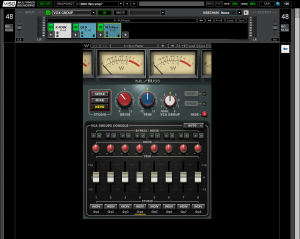 Lastly I have the NLS Bus inline to do its thing. You can play with which model you want to use with each bus but it makes more sense to me to stick with one model for all that you process to help glue them together a bit. However, this is really more of an opinion than a sense of right and one. Try both ways and see which works best for you.
Lastly I have the NLS Bus inline to do its thing. You can play with which model you want to use with each bus but it makes more sense to me to stick with one model for all that you process to help glue them together a bit. However, this is really more of an opinion than a sense of right and one. Try both ways and see which works best for you.
Well that’s it. My last set of suggestions. What ways do you guys/gals improve your mix from a bus standpoint? I am always open to hear new ideas. In fact, a lot of the more unique things that I do, across the whole band, are ideas that I’ve combined and improved from suggestions over the many years I’ve been mixing. Let me know in the comments below or email me at daniel@studiostagelive.com what unique things you do that really help. Lastly, there has been a few asking if they can get my preset files for my whole input list or even my multirack showfile. I will be sending those out to my subscribers here in about a week or so when I get the stuff compiled. If you are not a subscriber please go to this link and sign up. Not only will you get those files but you’ll get an email each week when new content is available on this blog. See you all next time!
